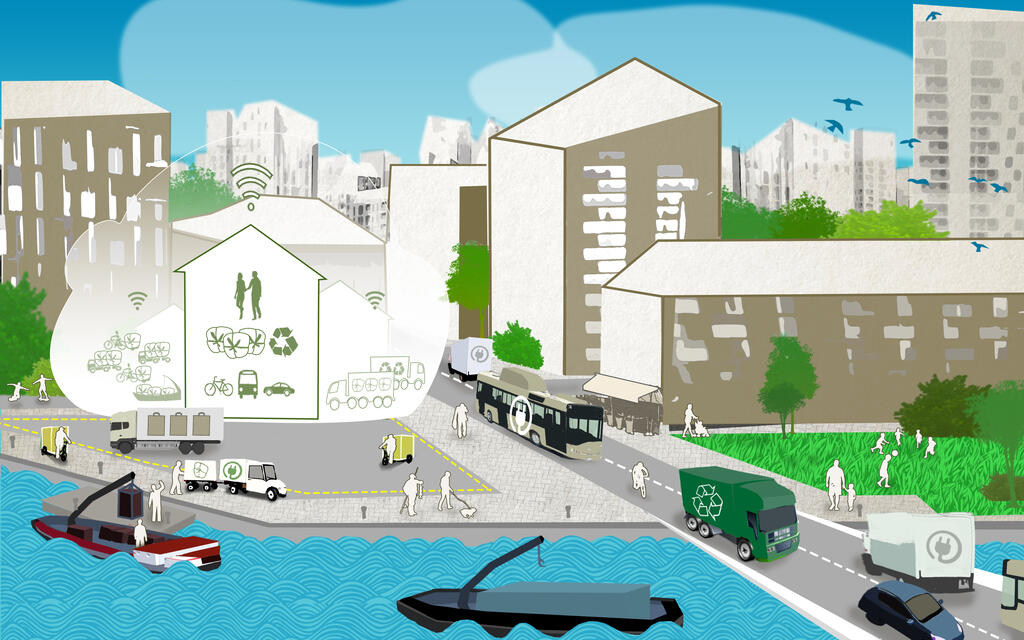Utilising the waterways to reduce car dependence
Today, we use many services that reduce our daily dependence on cars, such as home deliveries of food, clothing and pharmaceutical products. But there are still occasions when the obvious choice is to use the car. How do we make a necessary visit to the tip without a car for example? And what impact does this reduced car dependence have on the city's residents and the environment?

In a city such as Gothenburg, the river, which is centrally located and easily accessible to a lot of people, can effectively relieve the pressure on the road network. One solution is to have inhabitants drop off their coarse waste, end-of-life electronics and recycling at a barge that is moored close to the residential areas, which means that residents avoid driving to recycling centres some way outside the city.
"When a city uses a recycling barge it significantly reduces congestion on the roads. If usage proves tobe as frequent over a full year as it was over our trial period, which saw 2,500 people use the service over a seven week period, the number of trips by car in and around the city would drop by 17,500, which of course also has a positive impact on the environment," says Martin Svanberg, researcher at SSPA.
The importance of planning
In order to reduce car dependence by utilising the city's waterways, the municipality needs to factor in the proximity to the water when working on the detailed plan.
"Even if you do not know exactly how to utilise the waterways when planning, it is important that you position housing and public areas to ensure that the water is easily accessible. By doing so you avoid making major changes in order to connect to services on and by the water in the future," says Peter Årnes, Strategist, Recycling & Water Department at the City of Gothenburg.
Preparations
Another key factor if a municipality wants to promote the use of watercourses as a transport route is that the quays must be in good working order, which is one of the first steps to examine.
"Who owns or is responsible for the quays in a city? When were they last renovated? Has dredging been conducted to allow heavier and deeper vehicles to navigate the waterways? These are important questions that need answering before initiating a process of this kind," Peter Årnes continues.
Satisfied users
The results from the customer survey for the trial run in Gothenburg revealed that customer satisfaction was on average 4.5 out of 5, which indicates that visitors were in favour of the concept and wanted to continue using the barge if it were made a permanent feature.
"The fact that users feel satisfied and indicate that a recycling centre close to their neighbourhood would be a benefit to them is a must in order to turn a solution like this into a reality. The survey also showed that many users experienced a positive feeling of independence as they did not need to ask a relative or anyone else for help. This was especially true for many older people who considered this to be particularly valuable," Martin Svanberg concludes.
Read more about Surface-efficient transport solutions as a part of DenCity


